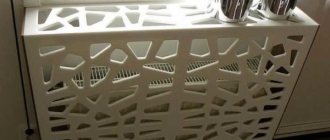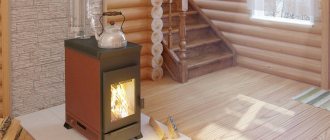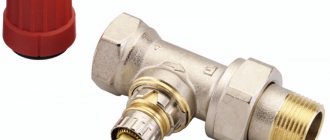Of the wide variety of additional heating, many prefer IR panels, because they are easy to use and quickly warm up the room. In addition, using the built-in thermostat, you can quickly set the required temperature. You can entrust the installation of infrared heaters to professionals or do it yourself, which will significantly save money.
Infrared heater - a heating device that emits heat through infrared radiation
Application area
Such heating devices are characterized by high efficiency rates, as a result of which they almost instantly warm up the room and slowly cool it. These factors indicate greater efficiency of the devices. Because of this, their use in rooms with high ceilings and large heat losses can be considered justified.
The most important feature of IR heaters is that they heat not air, but objects towards which the device’s emitter is directed
In addition, infrared panels are often used to heat civil and agricultural premises. In particular, these are schools, offices, greenhouses, kindergartens, shops, etc. There are also modifications that are designed to heat open areas.
Before purchasing a specific heating device, you should compare the upcoming operating conditions with the technical characteristics. For each specific object, it is advisable to choose certain products:
- Shortwave devices. They are often used in production. This is due to the aggressiveness of the design in operation due to the instantaneous heating of the object due to the temperature increase to hundreds of degrees.
- Long- and medium-wave instruments. They are in demand in private homes, as well as on civilian sites.
From this video you will learn how to install an infrared heater yourself:
Example of power calculation
Before you begin the process of installing infrared heaters, perform calculations of all rooms in the house. The following values will be used as an example:
- corridor – 5 m²;
- kitchen and living room – 20 m²;
- two bedrooms of 10 m² each;
- storage room – 3 m²;
- bathroom – 5 m².
Figure 2. Connection diagram for IR ceiling heater.
The total area is about 53 m². It is necessary to select a number of infrared heaters that would be sufficient to heat all these rooms. The connection diagram must include all places where installation needs to be done. Determine the total number of infrared heaters based on their power.
In this example, 2 1000 W heaters will be needed to heat the kitchen and living room. Each of them will heat 10 m². In each bedroom you will need to install 1 thermostat - a 1000 W device. To heat the corridor, storage room and bathroom, devices with a power of 500 W will be sufficient. As a result, the total power will be about 5.5 kW. The system connection diagram is as follows: Fig. 2.
Heaters must be installed at a certain height. As a rule, this value fluctuates between 220-350 cm. The heater cannot be installed at a height of less than 50 cm from a person’s head. It is not advisable to connect them where a person is constantly present. For example, it is recommended to exclude installation through the living room or kitchen. To prevent the head from being exposed to infrared radiation, the heater can be moved slightly to the side.
It is important to maintain distances between infrared heaters and surfaces
Principle of operation and varieties
A characteristic feature of such products is the release of heat, which helps to heat various surfaces - walls, floors, ceilings, etc. It should be noted that the air is heated partially, because the main flux of radiation is directed towards objects, which subsequently give off heat from themselves.
Infrared radiation is not afraid of wind, drafts and can warm you up even on a windy day
The device consists of a reflector and an emitter. The latter is responsible for the transmission of radiation during the heating process. The reflective element is a reflector, which is made from heat-resistant materials with high reflectivity. The heating elements can be:
- plates;
- open or closed spirals;
- quartz, infrared or halogen lamps;
- heating elements;
- carbon conductors.
Infrared equipment differs in several ways: purpose, installation method, energy source. According to the last parameter, they are divided into stationary and mobile. Devices can be for domestic and industrial needs.
The emitter has high power and a wide surface, due to which it provides comfortable conditions over large areas.
According to energy sources, all heaters are divided into several types:
- Electrical. The most popular type of devices that are installed in any premises. A mandatory element in the system is a mirror reflector for transmitting radiation in the required direction.
- Gas. Best suited for open areas or industrial buildings. Due to their high power, they are rarely found in residential areas. The fuel is a gas-air mixture.
- Diesel. They are in demand in rooms where wiring is weak. Such devices are often found on the street or in garages. The device does not require chimneys; cleaning is carried out through several filters.
- Film - often used in residential areas.
Pros of infrared heaters
A clear advantage of infrared heaters is their simple design and low price, compared to oil and convection heaters, which have a larger number of internal parts. But there are other advantages.
Direct heating
Other types of heaters use a two-stage heating system: first, the device heats the air, and the walls and the person heat up from the increased room temperature. Therefore, by expending a certain power, the equipment transfers less heat to the end consumer.
With infrared heaters, thermal radiation acts directly on the user, bypassing the air. Of course, the latter also gradually heats up, but this already occurs from warm walls and objects. Therefore, the electrical energy expended is completely transferred to the heat received by a person.
High heating rate
It takes about 30 minutes for a person to feel warm from the switched-on oil radiator. Time is spent heating the oil with an electric heating element, then the air in the room, and only then the user.
With convector models this happens a little faster, but the process is still complicated by the fact that warm air heated from the panel rises upward, and the person, remaining lower, continues to experience discomfort. And only when the entire air volume is heated and mixed, then you can warm up.
Infrared heaters begin to give off heat immediately after heating the coil, which takes 27 seconds. After this time, heat rays shine on the user, warming him up. When you come home from work, you don’t need to sit for a long time in a cold room, but you can immediately create a comfortable mini-climate.
Economical
Since IR heaters do not need to heat the entire room, they can be used at a lower power level compared to other types. For example, for oil heating it is optimal to use 1500-2000 W to warm up a large bedroom. It is enough for an IR device to consume 500 W when directed at the consumer. Even this simple example shows that energy consumption is reduced by 30-75% depending on the settings and distance from the user.
No convection air currents
According to the law of physics, warm air from other types of heaters always rises, and the lower a person is, the colder it is.
The directed heat from an infrared heater falls to a specific location, regardless of the altitude. IR rays do not propagate from bottom to top, but along a given vector, being directed by a reflector.
When convector heaters operate, there is constant mixing of air masses. This movement creates drafts and promotes the rapid airing of food left in the room and the movement of dust. Infrared heaters do not cause air movement, which ensures pleasant conditions.
Local heating
When the room is large, infrared heaters are practical because they allow local heating, maintaining an elevated temperature in only one part of the room. For example, in a large office, this could be an area with employees sitting at desks, while the filing cabinet side of the room remains cooler. In a warehouse, you can heat the area with the issuance of goods, where people directly rotate, and leave the racks at a lower temperature.
Quiet operation
IR heaters do not have fans, oil boiling, or other moving parts. It is set to a certain heating level, upon reaching which the device turns off. Of all the sounds produced, you can only hear the periodic clicking of the relay, which can be eliminated by setting the heater to maximum (so as not to turn off) and limiting the power of the heating element with a toggle switch (so as not to overheat). This silent option is optimal for the bedroom and children's room, and will not interfere with your rest with unnecessary sounds.
Possibility of heating in open spaces
If you install an oil radiator outdoors, its heat will evaporate upward, and in a light breeze it will cease to be felt at all, even at close range. IR heaters operate with infrared radiation, which passes “through” wind and drafts, continuing to warm people and objects. This allows them to be used on verandas without glazed windows, in gazebos, terraces, street cafes, VIP areas on sports grounds, and open workplaces.
This is of particular advantage in cases where ventilation and heat preservation are simply necessary at the same time. For example, when welding or painting, it is allowed to open all windows and doors in the room, but the device will invariably continue its warming effect.
Long service life
Ecological cleanliness
The heating elements are covered with glass tubes, so sometimes (after a long period of inactivity) you can only smell a slight smell of burnt dust, which quickly passes. During operation, no by-products are released (combustion of carbon, smoke).
There are no harmful materials in their design (only steel, glass, ceramics, dielectrics and PVC, in areas of the body that are not subject to heat), so no toxins or poisons evaporate during operation. The heat is gentle, like sunlight, and does not affect sleep or active life. If they break, they will not leak oil that contaminates the floor covering.
Wide range of installation possibilities
Unlike other types of heaters, IR devices can be installed at different angles relative to the user and in all spatial positions.
It can be done:
High mobility and unpretentiousness to the place of use (for example, models on a high stand with adjustable position) allow you to use one device in different conditions without having to buy several others (wall-mounted and ceiling-mounted) instead.
Advantages and disadvantages
Any equipment has both positive and negative sides. The advantages of infrared heaters include:
- Cost-effective (especially when using devices as an additional heat source).
- The device does not burn oxygen.
- No harmful effects on human health (scientists have proven that devices can even have a positive effect on the body).
- When mounted on the ceiling, they take up minimal space in the room.
- Safety for children.
- Quiet operation. In addition, the products can be used as a light source.
- Many models are equipped with a built-in thermostat, with which you can maintain the optimal temperature level.
- The heat remains for a long time, because heated objects release energy into space.
- Infrared systems are resistant to moisture, so they can be installed in gazebos, bathrooms or on terraces.
Many models have a thermostat, which helps maintain a comfortable temperature level.
The only disadvantage of the products is their high price.
Even a novice master can install an infrared heater on the ceiling. It is very important to carry out installation calculations correctly so that the use of the device is not dangerous.
Is it possible to hang an infrared heater on the wall?
Among heating devices, infrared heaters occupy a separate niche, gaining increasing popularity. When deciding whether such a device is suitable for specific operating conditions, it is worth considering its varieties and operating principles, as well as taking into account all the pros and cons of infrared heaters, so that the choice is correct and the result satisfies expectations.
Security measures
Please note that installation of IR panels involves working with electricity. It is very important to exercise extreme caution and follow safety rules:
- It is prohibited to install an infrared heater on the ceiling if fire hazardous objects are located nearby.
- Electrical wiring must be located on a non-combustible base.
- Fasteners must not come into contact with the heating element.
- It is not recommended to install devices with a power of more than 800 W in residential premises.
- The device must not be connected to the network until installation work is completed.
For more efficient operation of the device, it is recommended to place the device near objects that absorb heat well: stone walls, wood, carpets, etc.
Experts do not advise installing the heater near reflective surfaces, because this reduces the efficiency of the product. The mounting surface must be strong, because some structures weigh about 30 kg, although most of them weigh less.
Installation price
Installation of an electric infrared heater up to 3 kW costs the owner 2,500 rubles. The gas model will cost 3,000 rubles.
Installing an infrared heater is a simple task that can be handled by someone who understands the basic principles of how the tools work. The main thing is to pay attention to safety measures and strictly follow the instructions.
Choosing a suitable location
The most important requirement when installing an IR panel is the distance to a person’s head. This is especially true in work areas where people stay in one position for a long time.
The distance should be at least 1.5-2 m, it all depends on the power of the device. If it is less than 800 W, the device can be placed at a distance of 70 cm. If the indicators are 1-1.5 kW, then the minimum gap is 1 m. The specifics of specific premises determine a number of features of the installation of structures and the optimal layout of their placement. The table clearly shows the recommended location for the device in each specific room
To heat open areas, it is advisable to install several devices so that the radiation covers most of the human body. The units are capable of providing different temperature regimes for individual zones of the facility. To do this, it is enough to place several devices of different power in one room.
Useful video
Infrared heaters are gaining increasing popularity due to their efficiency, safety and high performance. You can enjoy all of the above benefits only by installing this device correctly.
Preparatory stage
Infrared heaters can be used as the main source of heat in a room. In this case, you cannot do without a careful calculation of heat losses. They depend on many factors, such as room size, materials, wall thickness, ventilation and region, since each region has a minimum permissible temperature.
List of required tools
At the preparatory stage, it is necessary to decide on the place where the heater will be mounted and prepare the following tools:
- drill or hammer drill;
- screwdriver;
- screwdriver;
- pliers;
- roulette.
This is the required minimum of tools, without which it will not be possible to install the heater. In addition to them, you can use a pyrometer for calculations when installing several devices at once.
Where and how to install an IR heater?
The location of the infrared heater depends on its type and heating plan. It can be installed on the ceiling, on the wall, with or without a slope.
Safety precautions
Remember that installing IR heaters involves working with electricity. Therefore, it is important to maintain maximum caution and follow safety rules:
- Never install the heater near fire hazards.
- Electrical wiring must be laid on a non-combustible base.
- The fastening elements must not touch the heating element.
- Do not install devices with a power of more than 800 watts for a residential building or apartment.
- Do not connect the heater to the network until installation is complete.
To use the heater more efficiently in your home, place it near materials that have high heat absorption rates, such as wood, carpets, and stone walls. U
The mounting surface must be strong enough, as some heaters can weigh up to 28 kg, although many, of course, are lighter.
Location and height from the floor
One of the important requirements for installing an IR heater is the distance to a person’s head, especially in work areas, where a person spends a lot of time practically motionless. This distance should be at least 1.5 - 2 meters. In fact, it is determined by the power of a particular heater. If its power is up to 800 W, then it can be placed at a distance of 70 cm from the human body. If the power is 1-1.5 kW, then the permissible distance starts from 1 meter.
The specifics of different rooms determine the features of installing the heater and the optimal layout of the devices. Where to place the heater:
| Room | Recommended place |
| Bedroom | The area above the headboard so that at least ⅔ of the bed is exposed to infrared radiation. |
| Kitchen | It is recommended to install the heater so that its rays are directed towards the window, the place where cold air flows from the street into the room. |
| Bathroom | On the ceiling, if this is the only source of heat in the room, or opposite a small area where people most often visit, if the IR heater is considered as an additional source of heat. |
| Hallway | On the ceiling, pointing down to the floor. It stays warm and dries very quickly. The same goes for shoes - they also dry quickly and remain warm. However, it is important to clean it so as not to dry it out, thereby spoiling it. |
When heating open areas, it makes sense to install several devices at once, so that infrared radiation reaches most of the surface of the body.
IR heaters can provide different temperature conditions in certain areas of the room. To do this, several devices with different power levels are installed in one room.
Infrared heater installation instructions
Each heater comes with step-by-step instructions for its installation and operation. Study it carefully, as they are all different, there may be discrepancies in the recommendations for different devices.
Installation of the device
Attaching the heater to the wall is carried out in a very simple way. You will only need basic skills in working with common construction tools, such as a drill, hammer drill and screwdriver. Keep in mind that the design of different heaters may differ; do not ignore the recommendations from the manufacturers.
- Step 1. Determine the heater mounting locations and mark them. In this case, it is better to use a tape measure to measure the required mounting height from the ceiling and the building level. Make sure all mounting points are at the same height.
Step 2. Drill holes with a drill or hammer drill if you have to deal with a concrete wall.
Electrical connection
Any infrared heater is mounted with a thermostat, a device that maintains a constant temperature. Any single-phase network is suitable for connecting them.
Step-by-step instruction
The manufacturer must include step-by-step instructions for installation and operation in the set of heating panels. It is necessary to study it carefully, because all units are different, so recommendations for them may differ.
Heater installation
Mounting the device to the wall is quite simple. To work, you will need a screwdriver, drill and hammer drill, as well as basic knowledge of working with the listed tools.
Designs may vary between devices, so please pay attention to manufacturer's advice.
Step by step process:
- Determine the locations for fastening the product and mark them. It is recommended for these purposes to use a measuring tape to measure the height of the mount from the ceiling. You will also need a building level. You need to make sure that all points are at the same height.
- Drill holes into which to then insert dowels.
- Using the parts included in the kit, secure the structure to the wall.
To properly install an infrared heater, you must strictly follow the recommendations described above.
Electrical connection
Any device is installed with a thermostat, which is needed to maintain a constant temperature. Any network consisting of one phase is suitable for connection. The exception is high-power industrial models. In a home or apartment, you don't need to worry about this.
Using a thermostat, the room temperature is monitored. This is necessary to ensure and maintain specified modes. If the values are higher than the specified level, the device automatically turns off, and the supply of electricity to the unit is resumed after the air has cooled.
Installation requires minimal preliminary preparation, no additional communications required
When installing the unit in several rooms at the same time, one thermostat will not be enough. It is necessary to install a separate one for each room. You don’t have to use them at all, but in this case the panels will consume significantly more electricity. In addition, it will be less comfortable to be in the room.
Step-by-step instructions for connecting the product:
- A high load resistant conductor should be used and installed in the ceiling or walls.
- Cover the cable with a layer of plaster. An alternative option is to use special boxes that can be used to hide electrical wires.
- The heater wiring must be connected in parallel to the main line.
- Then you should install a thermostat in each room at a height of 1.5 m.
Installing an infrared heater is not as difficult as it seems at first glance. Today, these designs are the most economical for heating homes. The devices can be used both as the main and additional heat sources.
Cons of infrared heaters
Despite all the advantages of infrared heaters, compared to oil or convection heaters, this type of equipment still has disadvantages. They are insignificant, but they should be taken into account when choosing a heating device for an office, home or apartment, since this will affect ease of use and safety.
Rapid decrease in temperature when the heater is turned off
If you turn off the oil heater, the heat from the heated liquid will continue to spread throughout the room for some time. This allows you to alternate intervals of activity and inactivity of the device so that it consumes less electricity, but does not stop heating.
Infrared heaters give off heat only when turned on. As soon as the voltage stops flowing to the heating element, the radiant heat stops. The user immediately feels cool. If the device has been working in the room for a long time, so that the walls and objects have time to heat up, then the comfortable temperature will last a little longer. When turned on for a short time, as soon as the device is turned off, it will immediately become cold.
Uneven heating
Another disadvantage of an infrared heater is uneven heating. All his work, due to the use of electromagnetic waves in the infrared range, has a directional effect. As a result, in a room with an area of 5x5 m, the heat will be felt by those people who are in the zone affected by the heater. The rest will be cool. For example, if in a children's room there are two beds in different corners, then you will have to place them side by side or use two IR devices at once.
Uneven heating also manifests itself in the fact that radiant heat warms the area like light from a flashlight - wherever it hits. Therefore, on the one hand, the human body may even feel hot, and on the other, the coolness of the surrounding air can be felt. When operating the device in the open air, you will have to periodically rearrange it or turn it yourself to keep warm from all sides.
Negative effects on humans with prolonged intense exposure
In general, IR heaters are safe for health, but problems can arise if you stay under a high-temperature device that is constantly on for a long time. It’s the same as sitting under the sun for a long time - you won’t be able to tan from the infrared rays, but the concentrated heat will dry out the skin, and the body will not have time to compensate for the loss of moisture by removing sweat in this place. Overdried skin can then bake and peel. Therefore, it is not recommended to sit with one side of your body exposed to a constantly turned on heater.
Hazardous for children and pets
High-temperature IR heaters with spiral heating elements can cause burns if a person touches the bulb or reflector. Although the heating element of the IR heater is enclosed in a glass tube, the surface of the latter still gets very hot.
The heating element of the device is often covered with a metal grid with large cells, so children, out of curiosity, can easily stick their hand in there. In view of this, you should not leave the IR heater on and children in the same room unattended. A pet with long hair may be harmed if it rubs against the heater and the fur accidentally touches the heated coil bulb.
Bright light
Infrared heaters with tubular heating elements have another drawback - a bright glow. In daylight, this is hardly noticeable and only helps to see whether the device is working or not. In the setting of a street cafe, it is even attractive in the evening.
But in a room at night, such a “light bulb” can interfere with rest, continuing to shine brightly in the eyes. It is impossible to turn the housing in the other direction, because then the heat will be directed past.
Fire risk
This drawback again applies only to high-temperature models. The heater's tall stand allows it to be mounted at different levels to customize the direction of radiant heat depending on the user's location. The stand has a stand with four support points that provide a stable position, but a large dog in the house can easily knock over the device when running past. If this is not seen, touching the carpet or continuing to shine the light on the wood flooring in this position can cause a fire.
Having considered the topic of pros and cons of IR heaters from all sides, it will be easier for you to make your choice. And you can find out already tested and popular models that have positive reviews by looking at the next page of the site, which describes the best infrared heaters of all types.
Source
Warm ceiling
- The main advantage of a warm ceiling
- Lack of a warm ceiling
- Installation of a warm ceiling
The main advantage of a warm ceiling
So, the most important argument in favor of using infrared heating is precisely the low power of this type of heating compared to other heating systems.
For example, the power of a water heated floor system averages 50-80 W per square meter. And the power of films for ceiling heating devices, declared by the manufacturer, is 15 W. This is certainly great. But it's not that simple.
To mount a heating film on the ceiling, it is necessary to mount the lathing, mount heat-insulating mats, mount a reflector layer, and only then mount the heating film.
At the same time, you need to understand that heat loss from your home or premises should be minimal. Otherwise, energy consumption when using a warm ceiling will be comparable to traditional heating systems.
This is of course cheaper than a device, for example, a concrete warm water floor system. But the quality is the only plus.
Lack of a warm ceiling
If you have warm water floors, then they can be heated with any boiler. For example, electric, gas, diesel, solid fuel, heat pump, solar collector and so on.
But infrared heating film works only on electrical energy. Thus, if the electricity is turned off, you will be left without heating.
According to the heating principle, warm ceilings and warm floors are the same. Both of these systems operate in the long-wave infrared heating range.
Therefore, I would not consider warm ceilings as the main heating. As an alternative please. For example, you turn on warm ceilings during the day while you are at work. And at night, turn on the stove or turn on another boiler.
It is also convenient to use ceiling heating in the off-season to maintain a comfortable temperature in the house without turning on the main heating.
Installation of a warm ceiling
When installing a heating film on the ceiling, it is necessary to pay attention to the quality of the connection between the supply cable and the film and the reliable insulation of this connection, since water leakage from the roof or upper apartments cannot be ruled out. And if the connection is poorly insulated, you may get an electric shock or a fire may occur due to a short circuit with water. And if the connection is poorly insulated, you may get an electric shock or a fire may occur due to a short circuit with water.
And if the connection is poorly insulated, you may get an electric shock or a fire may occur due to a short circuit with water.
The next rule when installing a warm ceiling is the permissible installation of a finished ceiling at a distance of no more than 100 mm from the heating film.
In this case, the thickness of the finished ceiling materials should not exceed 20 mm.
In addition to all of the above, the heating film for installing a warm ceiling differs from the film for installing a warm floor.
The film for a warm ceiling is equipped with additional reflective elements, which in turn allow the installation of warm ceilings with a height of no more than 4 meters.
To summarize the above, it is advisable to use warm ceilings in well-insulated buildings and premises as alternative heating or in the off-season.
It is also convenient to use warm ceilings with an uninterrupted supply of electrical energy. Although today no one will give guarantees for uninterrupted supply.
And to provide basic heating, you can use radiator heating systems, heated floors or any other system.
If you have questions about the installation of underfloor heating systems, then follow the links and you will receive comprehensive answers on the installation of water or electric underfloor heating. published econet.ru
If you have any questions on this topic, ask them to the experts and readers of our project here.
Peculiarities
Infrared heaters have a rather interesting operating principle. They heat not the air itself, but objects located around them due to infrared radiation. As a result, they become warm, releasing part of the thermal energy into the atmosphere - the room becomes warm and comfortable. Let's look at the main features of IR heaters:
The most striking drawback of these heaters is the high electricity consumption, which is typical for any, even the most economical electrical appliance.
- Correct heat distribution. If you install traditional radiators indoors, it will be cool near the floors and hot near the ceilings. In the case of IR heaters, the floors will be warm, since they will be heated by IR radiation;
- When installed correctly, they do not cause harm to human health - if this equipment is installed correctly in its normal place, then it will not have a negative effect on the body (in particular, there will be no headaches);
- Fast heating of rooms - they warm up noticeably faster than traditional radiators;
- Almost complete silence - only gas appliances make noise (and even then they are practically inaudible);
- Can work in rooms with high humidity levels;
- Available for use in outdoor conditions, creating a comfortable environment in open areas;
- No negative impact on the environment.
Installing an IR heater in a living room will create a warm atmosphere in which it is pleasant not only to relax, but also to work.
More details about the design
The main feature of this type of equipment is the release of heat aimed at heating various surfaces: walls, floors, ceilings, pieces of furniture and interior - in a word, everything that is in the room. In this case, the air is only partially heated, since 90% of the radiation is directed at objects, which, in turn, already give off heat to the air.
The main design elements of this type of equipment are an emitter and a reflector, and the energy source is electricity, gas or diesel fuel. The emitter is responsible for transmitting infrared radiation as it heats up. The reflective element is a reflector, which is made of heat-resistant material with good reflectivity.
Working with film: basic principles
It is necessary to install the film, guided by a number of rules:
- The minimum permissible ceiling height is 230 centimeters;
- Before installation, all finishing work must be completed;
- If you plan to install electrical equipment and air duct casings, then the distance between them and the film should be more than 5 centimeters;
- The base on which the material will have to be fixed should not accumulate moisture;
- If the ceiling is adjacent to the attic, then it is first necessary to insulate the room.
[my_custom_ad_shortcode4]
Gas
If there is no electricity, then it is better to use gas-powered devices. Typically, liquefied gas is used in cans that are attached to the back of the device itself. Installation of gas infrared heaters is not difficult, and their maintenance is inexpensive. The only drawback is the need to purchase (or refill) spare cans on time.
Advice. When installing gas infrared devices, it is necessary to determine the ventilation system in advance.
We install the heater ourselves
The simplest and most effective installation method involves placing the heating device on the ceiling of the room. The chassis is suspended in the following order:
- At the short ends of the case, it is necessary to unscrew the screws and remove the covers; the suspension brackets are inserted into the slots and secured with a latch;
- The installation locations of anchor hooks are marked according to the distance between the brackets on the ceiling;
- Using the markings, holes are drilled in the ceiling slab, plugs are hammered in and the suspension hooks are screwed in.
Before fixing the infrared heater, you will need to lay the wiring from the electrical input panel to the thermostat installation location and then to the heater. Ceiling structures are rarely equipped with built-in thermostats, so the box responsible for controlling the heating process is placed at a height of 1.6-1.7 m near the entrance to the room according to the above diagram.
To connect an infrared heater, you will need to strip the ends of the wires and secure them in the chips according to the diagram given in the product passport or pasted on the inside of the cover. All that remains is to connect the wiring to a separate package on the panel, and you can put the infrared heater into action.
Digital thermostats allow you to control the temperature in your room with high precision. But in practice, infrared devices have a slight heating inertia. For example, by setting the room temperature at 22°C on the device, the heater will actually raise it half a degree or a degree higher, since the hot radiating coil or heater panel continues to heat the air by inertia for another 5-7 minutes after the thermostat cuts off the power.
Where to go and how much does the work of the masters cost?
You don't have to do everything yourself. If you do not have enough experience in installation work with electrical equipment, contact one of the companies offering their services. The cost of installers' work averages from 1,500 rubles for 1 heater. Many of them guarantee their work, so there are no other good reasons to refuse these services other than the desire to save money.
Installing infrared heaters should not be intimidating - this is not a reason to abandon one of the most economical methods of heating an apartment or house today. With the help of specialized companies that are ready to help install heaters, difficulties should not arise.
Main process
Hanging the case
First you need to determine the installation location of the infrared heater in the house (or apartment). As we said above, the housing can be placed both on the ceiling and on the walls, depending on the individual preferences of the owners.
The first thing you need to do is mark out the mounting locations yourself. To do this, use a tape measure to measure the same distance from the ceiling to the selected area. It is also recommended to use a building level, with which you can level the brackets in a horizontal plane.
After marking, proceed to drilling. If the ceiling (or wall) is made of wood, drill holes with a drill. If you have to deal with concrete, you cannot do without a hammer drill. You need to drive dowels into the created holes and screw in the brackets, after which you can install the infrared heater in its place.
Please note that the design of the unit varies. Some products have guides that are fixed into brackets
A simpler option is chains attached to the ceiling (special holders attach to them). Also on the market you can see infrared heaters on a leg, which are simply placed on the floor.
Electric installation work
As we said at the beginning, the process of connecting an infrared heater to the network will be carried out using a temperature controller.
First you need to connect the contacts of the collapsible electrical plug to the thermostat terminal blocks, which are installed in the product body. Each “socket” has its own designation: N – zero, L – phase. It should be noted that there are at least two of both zero and phase terminals (from the network to the regulator and from the regulator to the heater). Everything is quite simple - you strip the wires, insert them into the seats until they click (or tighten the screws). Be sure to follow the color coding of the wires so that the connection is correct.
For your attention here are the correct connection diagrams:
As you can see, connecting an infrared heater through a thermostat is quite simple, the main thing is not to mix up the wires and tightly tighten them in the terminal blocks.
A very important nuance is the correct choice of location of the regulator. You should not install the product next to a heater, because in this case, the incoming warm air will negatively affect the accuracy of the measurements. It is best to place the device in a more distant area, at a height of one and a half meters above the floor.
Also note that you need to install the controller in the coldest room, otherwise the heating problem will not be completely solved. As for the number of infrared devices served by one temperature controller, it all depends on the power of the heaters
Typically, one 3 kW controller is used for several products, with a total power of no more than 2.5 kW (so that there is a reserve of at least 15%).
You can read more about connecting a thermostat to an IR heater in our separate article, which provides several installation diagrams!
So that you can clearly see the entire connection process with your own hands, we provide these lessons for viewing:
Video instructions: connecting an infrared heater with your own hands
How to connect a temperature controller
Connection diagram
There are no difficulties in connecting such heaters after their installation - we need to run the cable from one device or group of heaters to the thermostat, and then to the nearest junction box. Our thermostat simply breaks one wire (phase), no additional cables or conductors are needed. If the power of a heater or group of heaters is 3 kW or more, lay a separate solid line to the distribution board and equip it with an RCD.
The most difficult part of installation is laying the wires. To prevent them from being conspicuous, it is advisable to recess them into walls and floors. If this is not possible, install plastic cable channels. In utility rooms, use corrugation. Groups of heaters are connected to each other in plastic junction boxes, trying to avoid twists.











